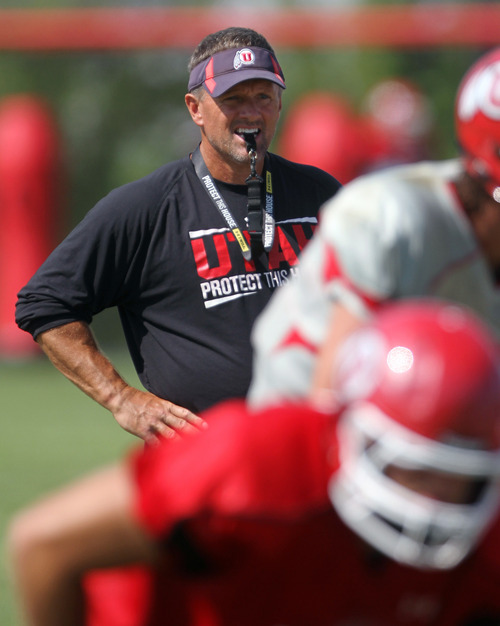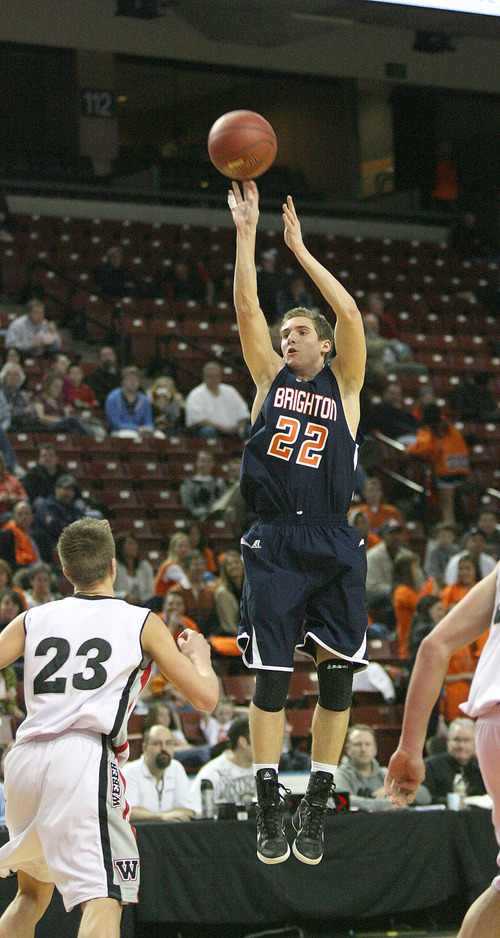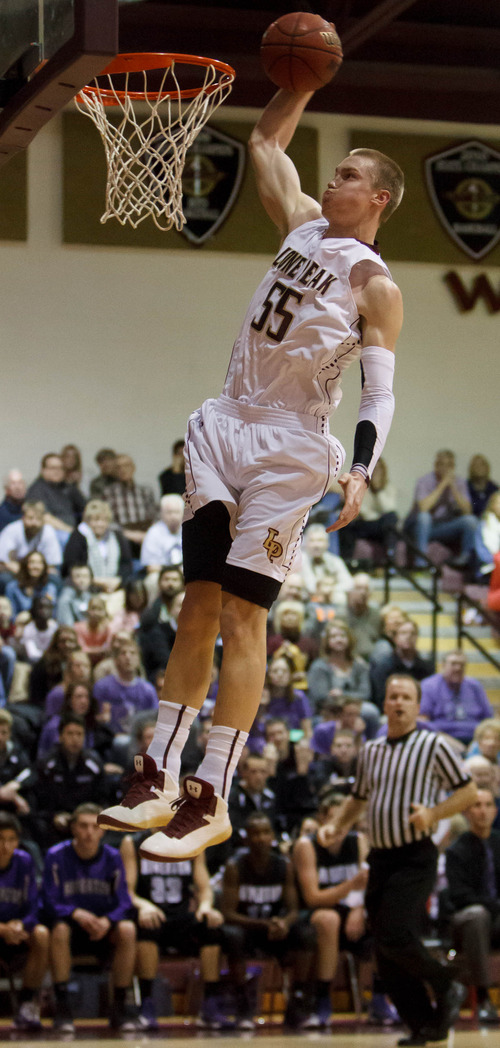This is an archived article that was published on sltrib.com in 2013, and information in the article may be outdated. It is provided only for personal research purposes and may not be reprinted.
When he heard the announcement in October that the LDS Church was lowering the minimum missionary age from 19 to 18 for young men and 21 to 19 for young women, BYU coach Patrick Shane applauded the changes. He also knew they would have an immediate impact on not only his programs, but also on athletic programs across the nation.
"A game-changer for anyone who coaches [LDS athletes]," Shane said. "We knew it would be right away."
The coach, in his 33rd year at the Provo school owned and operated by The Church of Jesus Christ of Latter-day Saints, liked the change even though he knew it would hurt the competitiveness of the two women's sports programs he oversees, track and cross country, at least in the short term.
"We knew we would have some holes to fill," said Shane, who estimates that 90 percent of the female athletes at BYU are LDS. "We knew that, initially, we were going to struggle to maintain our level of success."
Six months later, as another LDS General Conference approaches, the impact has been noticeable. Shane said that four women he coaches have taken advantage of the change and either left on missions, or will do so shortly.
Shane is not alone.
Coaches at all of Utah's colleges and universities, and many at out-of-state institutions that recruit and compete with LDS athletes, have been affected by the shift.
"When I heard it, I started thinking, 'OK, now this, this, this, this and this [will have to be figured out],' " said BYU football coach Bronco Mendenhall, who deals with more prospective and returned missionaries than any coach in the country. "Hard to concentrate on the rest of the [conference] talks for a while."
The impact on coaches who run men's athletic programs has been different than on those who coach women.
Women's coaches now face, or have faced, the prospects of losing athletes right away to missions. Before the change, LDS female athletes would generally compete all four years and then go on missions, rather than interrupt their careers with just one year of eligibility remaining when they turned 21.
Now, they are more likely to either play a year and go, or redshirt their first year and take off.
"I am excited for this change, because it is going to be helpful for female athletes in the long run," Shane said. "Women gain strength back more slowly than men and don't retain it as long. Having [uninterrupted] time in the program will help them recover from missions better."
Women's team coaches now find themselves talking about mission options with the high-school girls they are recruiting, a topic that never surfaced before, at least for Shane. Choosing the proper time to go is also important, Shane said, because women serve 18 months and return at a different time of year, while men serve two years and usually come back the same month they left.
Before the change, young men usually played a year and then left, as will be the case with BYU basketball player Cory Calvert. Now, most of them — but not all — will go first because they will have turned 18 their final year of high school.
It is not mandatory that young men leave when they are 18, as Utah basketball coach Larry Krystkowiak well knows. Two Salt Lake Valley LDS standouts, East High's Parker Van Dyke and Brighton High's Brandon Miller, signed with Utah in November.
Miller, who turned 18 in July, graduated early and has already entered the Missionary Training Center in Provo. He will serve in Buenos Aires, Argentina. Van Dyke is also 18 and originally planned to go on a mission this summer, but instead will play a season and then depart, partly because there's a chance he could be a major contributor next season.
"Everyone can go right away now, so that's helpful," Krystkowiak said. "We don't have to wait until [they are] 19 anymore. It's just more flexibility for all parties now."
There were 25 returned missionaries on the University of Utah football roster in the fall, and coach Kyle Whittingham counted 18 players in his program who are currently serving missions. He said the change has helped take some of the guesswork out of recruiting prospective missionaries.
"It was a debate whether to send them right away or wait," Whittingham said. "Now it should be more consistent where you get guys out [on missions] as soon as you can after graduation."
BYU men's basketball coach Dave Rose said he favors the minimum-age change because it gives mission-bound athletes more options.
For instance, prized recruit Eric Mika of Lone Peak has already turned 18, but has decided he would rather play a year of college basketball and then serve. Conversely, Lone Peak's Nick Emery, who has also signed to play for BYU, decided he would leave as soon as he could. He graduated early and will enter the MTC on May 1 before heading off to Frankfurt, Germany.
"It's their decision, and we support them 100 percent with whatever they decide," Rose said. "So far, it has worked out well."
Twitter: @drewjay —
Trib Talk
LDS women are scheduled, as of now, to offer invocations or benedictions at the faith's General Conference this coming weekend — an apparent first in 183 years of Mormon history.
Join us live online at sltrib.com at 12:30 p.m. April 8 for a Trib Talk video chat about this and other news out of the semiannual gathering of LDS faithful. The Salt Lake Tribune's Jennifer Napier-Pearce will lead the discussion in which religion reporter Peggy Fletcher Stack, a representative of Let Women Pray in General Conference and others will participate. The group will take questions during the chat, which will last about 45 minutes.


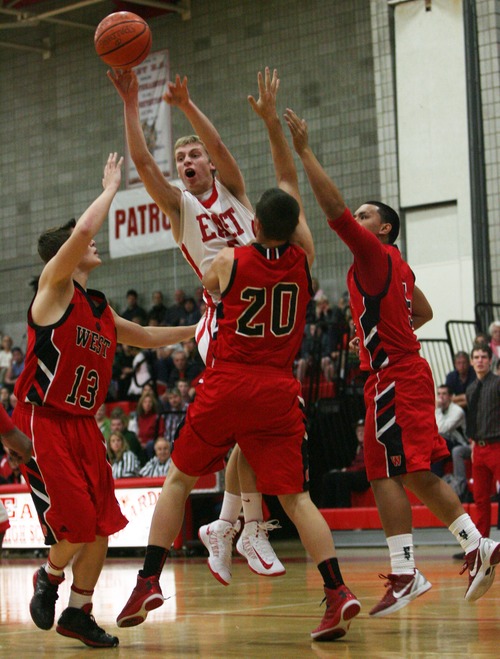

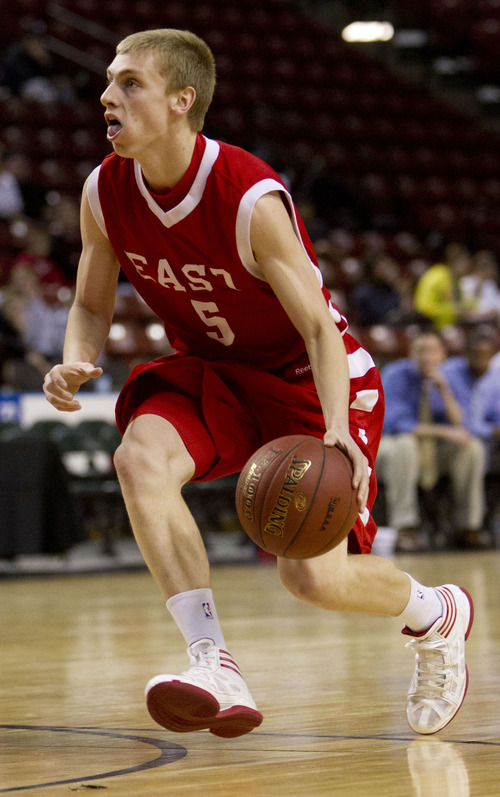
![Francisco Kjolseth | The Salt Lake Tribune
"When I heard it, I started thinking, 'OK, now this, this, this, this and this [will have to be figured out],' " says Bronco Mendenhall,
BYU football coach.](https://archive.sltrib.com/images/2013/0402/ldstab_recruiting_040213~11.jpg)
![Francisco Kjolseth | The Salt Lake Tribune
"When I heard it, I started thinking, 'OK, now this, this, this, this and this [will have to be figured out],' " says Bronco Mendenhall,
BYU football coach.](https://archive.sltrib.com/images/2013/0402/ldstab_recruiting_040213~10.jpg)
![Rick Egan | The Salt Lake Tribune
"We don't have to wait until [they are] 19 anymore. It's just more flexibility for all parties now," says Larry Krystkowiak, Utah men's basketball coach.](https://archive.sltrib.com/images/2013/0402/ldstab_recruiting_040213~8.jpg)
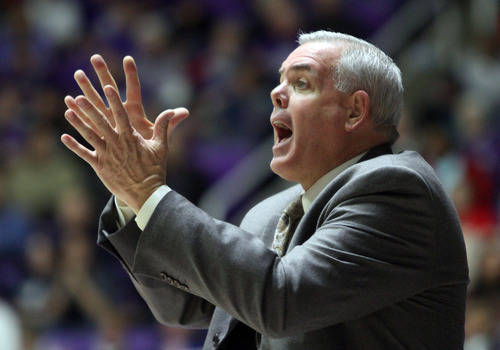
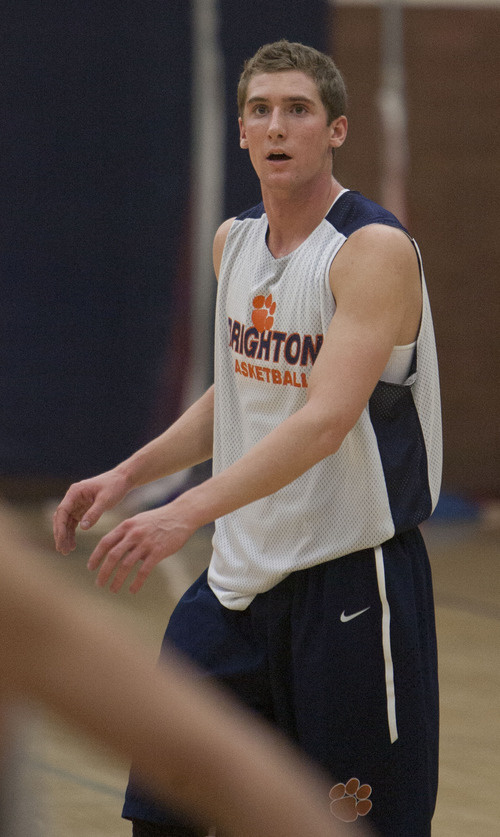
![Scott Sommerdorf | The Salt Lake Tribune
"We don't have to wait until [they are] 19 anymore. It's just more flexibility for all parties now," says Larry Krystkowiak, Utah men's basketball coach.](https://archive.sltrib.com/images/2013/0402/ldstab_recruiting_040213~7.jpg)

